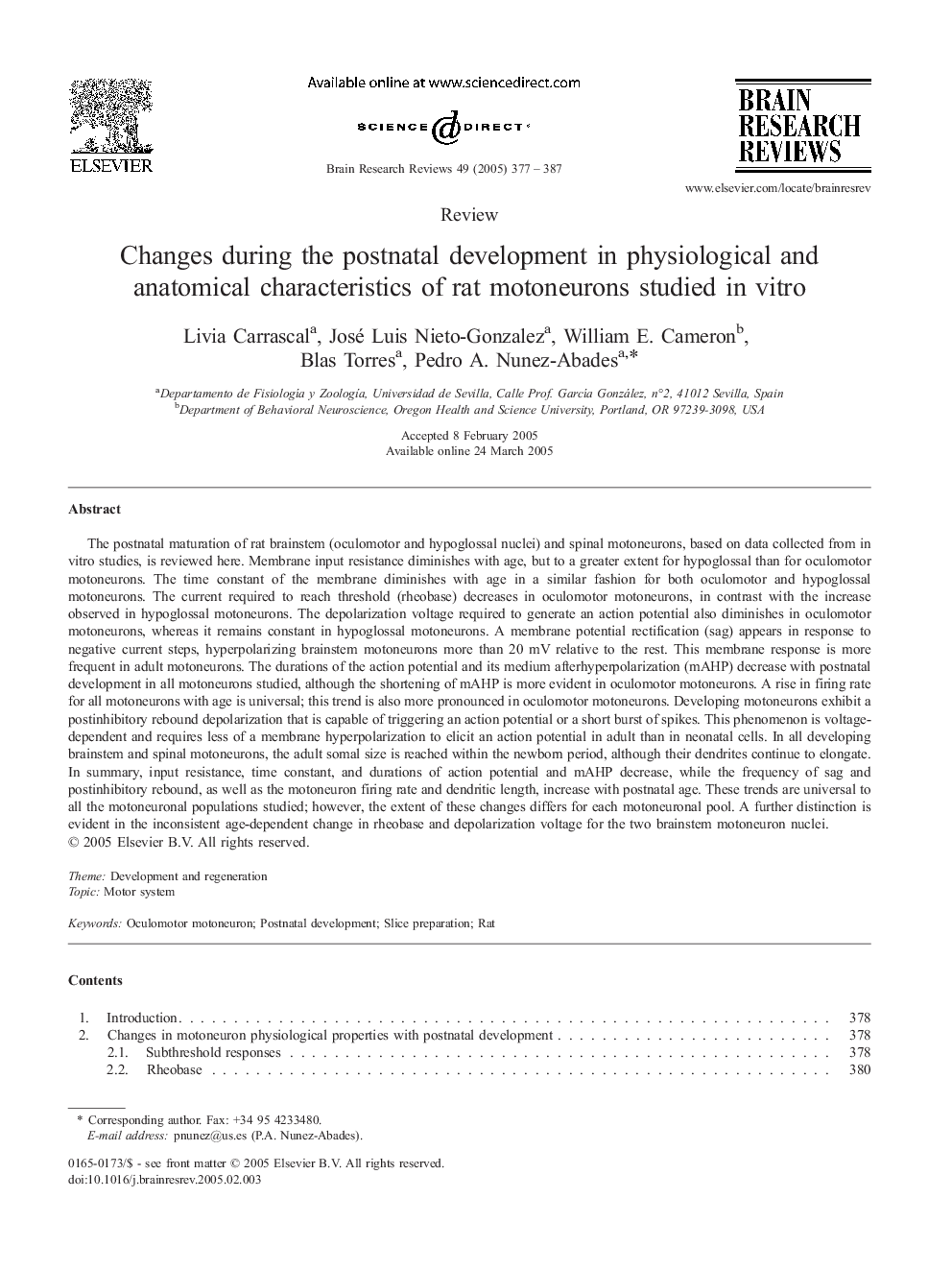| کد مقاله | کد نشریه | سال انتشار | مقاله انگلیسی | نسخه تمام متن |
|---|---|---|---|---|
| 9423091 | 1294770 | 2005 | 11 صفحه PDF | دانلود رایگان |
عنوان انگلیسی مقاله ISI
Changes during the postnatal development in physiological and anatomical characteristics of rat motoneurons studied in vitro
دانلود مقاله + سفارش ترجمه
دانلود مقاله ISI انگلیسی
رایگان برای ایرانیان
کلمات کلیدی
موضوعات مرتبط
علوم زیستی و بیوفناوری
علم عصب شناسی
علوم اعصاب (عمومی)
پیش نمایش صفحه اول مقاله

چکیده انگلیسی
The postnatal maturation of rat brainstem (oculomotor and hypoglossal nuclei) and spinal motoneurons, based on data collected from in vitro studies, is reviewed here. Membrane input resistance diminishes with age, but to a greater extent for hypoglossal than for oculomotor motoneurons. The time constant of the membrane diminishes with age in a similar fashion for both oculomotor and hypoglossal motoneurons. The current required to reach threshold (rheobase) decreases in oculomotor motoneurons, in contrast with the increase observed in hypoglossal motoneurons. The depolarization voltage required to generate an action potential also diminishes in oculomotor motoneurons, whereas it remains constant in hypoglossal motoneurons. A membrane potential rectification (sag) appears in response to negative current steps, hyperpolarizing brainstem motoneurons more than 20 mV relative to the rest. This membrane response is more frequent in adult motoneurons. The durations of the action potential and its medium afterhyperpolarization (mAHP) decrease with postnatal development in all motoneurons studied, although the shortening of mAHP is more evident in oculomotor motoneurons. A rise in firing rate for all motoneurons with age is universal; this trend is also more pronounced in oculomotor motoneurons. Developing motoneurons exhibit a postinhibitory rebound depolarization that is capable of triggering an action potential or a short burst of spikes. This phenomenon is voltage-dependent and requires less of a membrane hyperpolarization to elicit an action potential in adult than in neonatal cells. In all developing brainstem and spinal motoneurons, the adult somal size is reached within the newborn period, although their dendrites continue to elongate. In summary, input resistance, time constant, and durations of action potential and mAHP decrease, while the frequency of sag and postinhibitory rebound, as well as the motoneuron firing rate and dendritic length, increase with postnatal age. These trends are universal to all the motoneuronal populations studied; however, the extent of these changes differs for each motoneuronal pool. A further distinction is evident in the inconsistent age-dependent change in rheobase and depolarization voltage for the two brainstem motoneuron nuclei.
ناشر
Database: Elsevier - ScienceDirect (ساینس دایرکت)
Journal: Brain Research Reviews - Volume 49, Issue 2, September 2005, Pages 377-387
Journal: Brain Research Reviews - Volume 49, Issue 2, September 2005, Pages 377-387
نویسندگان
Livia Carrascal, José Luis Nieto-Gonzalez, William E. Cameron, Blas Torres, Pedro A. Nunez-Abades,